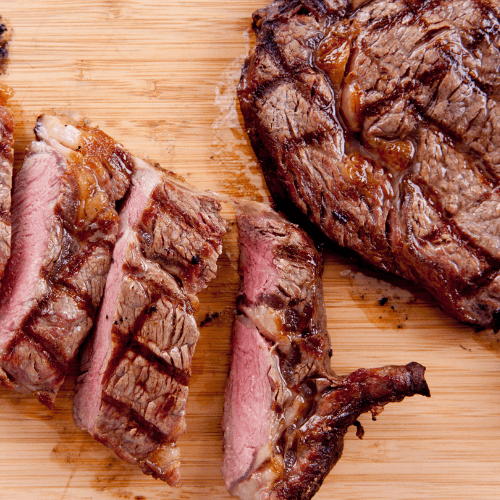
Discover how meat continues cooking after you remove it from heat
What You'll Master: Why timing your removal temperature is crucial for hitting your target doneness perfectly
Time Needed: 10 minutes
You'll Need:
2 identical thick chicken breasts or pork chops (at least 1 inch thick)
instant-read thermometer
cutting board
timer
Test 1: The Immediate Cut Test#
What You'll Notice: Cutting meat immediately shows its cooking state at removal temperature
The Action: Cook one piece of meat until it reaches exactly 155°F (68°C) internal temperature. Immediately remove from heat and cut it open right away.
The Discovery:
Interior shows the doneness level at 155°F (68°C)
Juices flow freely from the cut
Color and texture represent the "stopping point"
This is your baseline for comparison
Test 2: The Resting Temperature Rise#
What You'll Notice: Meat temperature continues climbing even off the heat
The Action:Cook the second identical piece to exactly 155°F (68°C). Remove from heat but DON'T cut. Insert thermometer and watch the temperature for 5 minutes.
The Discovery:
Temperature continues rising for 3-5 minutes
Can climb 5-10°F (3-6°C) higher depending on thickness
Thicker pieces show more dramatic temperature rise
Temperature eventually peaks and starts declining
Test 3: The Rested Cut Comparison#
What You'll Notice: The rested meat shows dramatically different doneness despite identical removal temperature
The Action: After the 5-minute rest, cut open the second piece and compare it directly to the first piece.
The Discovery:
Rested meat appears more cooked through
Color is more uniform throughout
Texture feels firmer and more set
Less juice flows from the cut (juices redistributed)
Test 4: The Target Temperature Calculation#
What You'll Notice: You can work backwards from your desired final doneness
The Action: If you wanted the final doneness to match the first piece (155°F/68°C), calculate when you should have removed the second piece from heat.
The Discovery:
To hit 155°F (68°C) final temperature, remove at 145-150°F (63-66°C)
Thicker pieces need larger temperature buffer
Dense proteins (like pork) carry over more than delicate ones
This explains why professional cooks remove meat "early"
What This Means for Your Cooking#
You've discovered why experienced cooks seem to magically nail perfect doneness every time. They understand carryover cooking and remove meat 5-10°F (3-6°C) before the target temperature. This prevents the disappointment of:
Overcooked meat that was perfect when you checked it
Dry results from cooking to the final target temperature
Guesswork about when food is actually "done"
Now you can time your removal perfectly by accounting for this continued cooking. Your meat will finish cooking to exactly the right doneness while resting, giving you consistently professional results.